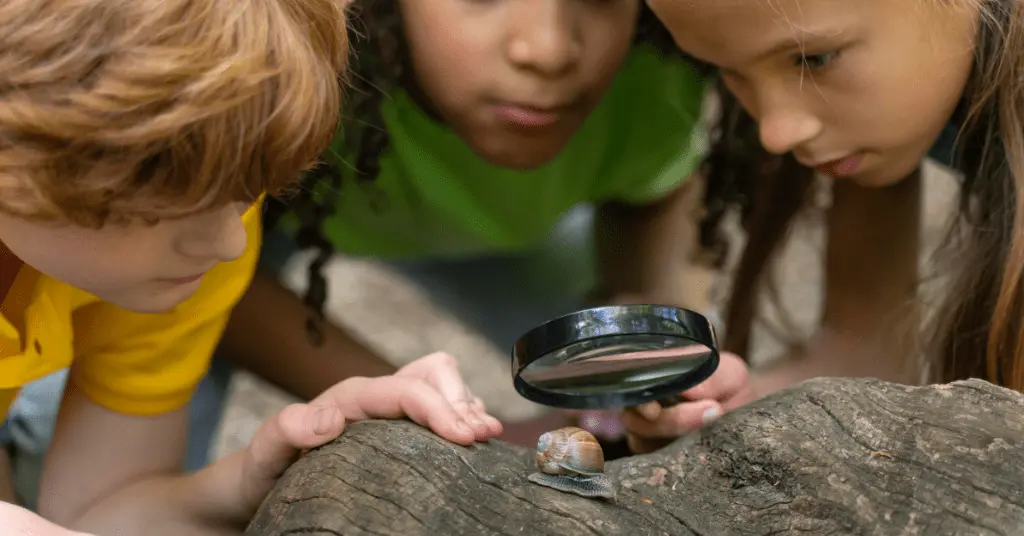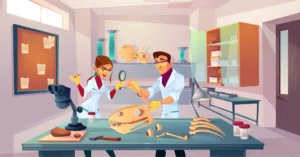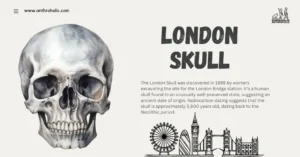AI Answer Evaluation Platform Live Now. Try Free Answer Evaluation Now
Zooarchaeology
Zooarchaeology, a branch of archaeology, is the study of animal artefacts that have been discovered in remote areas in the past. The word’s less attractive sibling, archaeozoology, is not as lovable in English as it is in other languages. The types of processes that possibly fit into these two categories have been identified by some[1], however research that is comparable in both form and substance is published under both designations. There are presently no studies on the origins of zooarchaeology. Such an attempt would be tough to undertake given that good literature can be found in a large range of languages ranging all the way back to the seventeenth century.

Contribution of Zooarchaeology
Zooarchaeology has contributed significantly to archaeological research for more than a century because of its capacity to date archaeological sites using faunal data, learn a great deal about historical diets, habitats, and human influences on those ecosystems, as well as, less reliably, discover historical, social structure. Zooarchaeology has long been a crucial aspect of ancient archaeology, although it has only now been recognised as a separate subdiscipline. Until before, zoology and palaeontology specialists with primary competencies and areas of interest outside of archaeology usually handled the bulk of tests on animal remains from archaeological sites. But while the research done by these specialists was often of the highest degree and had a lasting effect, it was sometimes wrongly connected to other areas of the relevant archaeological study[2]
Archaeology and Zooarchaeology
As archaeology as a whole evolved from its largely descriptive origins, a more visibly scientific perspective developed. This point of view started to take shape in the middle of the 1960s. Customary techniques Throughout a decade or two, a group of professionals with in-depth expertise in both biology and archaeology gathered together. They centred their research on zooarchaeological concerns and produced ideas, approaches, and tactics that were crucial to tackling those issues.
Future growth in Zooarchaeology
Zooarchaeology is now taught in the majority of genuine PhD programs in archaeology in the USA. In contrast to other object-based research disciplines outside of archaeology, such as lithic and pottery studies, zooarchaeology provides a substantial benefit since the units under investigation are given by biology, ergo their biological significance is never in question.
These commodities generally fit into one of two groups. First, taxonomic units like species, genera, and families are part of the Linnaean system. Other anatomical units include the various components that make up an insect’s exoskeleton or the skeleton of a vertebrate. Because of this, zooarchaeologists may not agree on the categorization of a certain specimen but are comfortable that their classification techniques are useful.Zooarchaeological lab work compares ancient bone sections with known reference skeletons from the present in order to establish precise taxonomy identifications. See philosophy and science in archaeology, philosophy and science in archaeology, and philosophy and science in archaeology for further information on how philosophy and science are connected to archaeology[3]
See Also
References
[1] Reitz, E.J., Wing, E.S., 2008. Zooarchaeology, second ed. Cambridge University Press, Cambridge, UK.
[2] Driver, J.C., 2011. Identification, classification, and zooarchaeology. Ethnobiology Letters 2, 19–39.
[3] Grayson, D.K., Delpech, F., Rigand, J.-P., Simek, J., 2001. Explaining the development of dietary dominance by a single ungulate taxon at Grotte XVI, Dordogne, France. Journal of Archaeological Science 28, 115–125.




